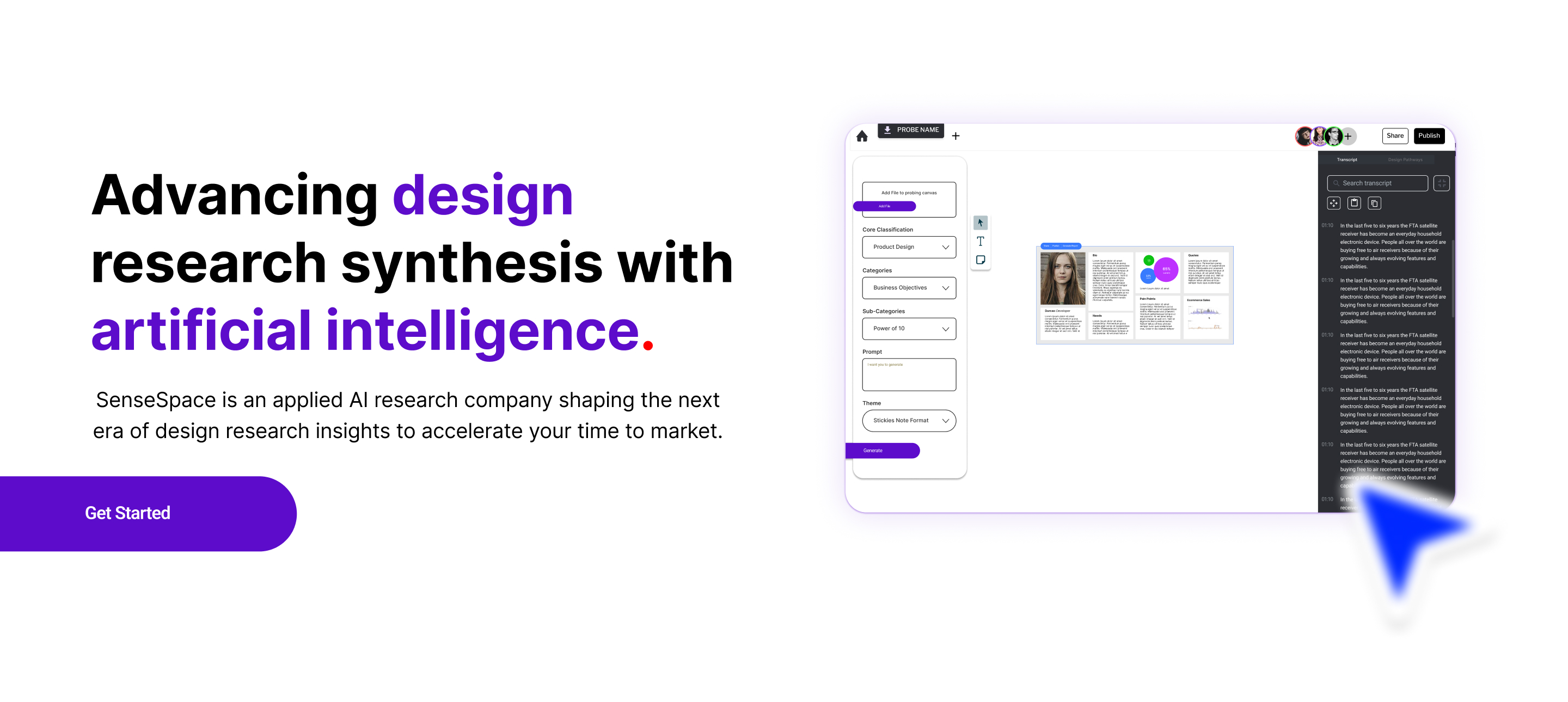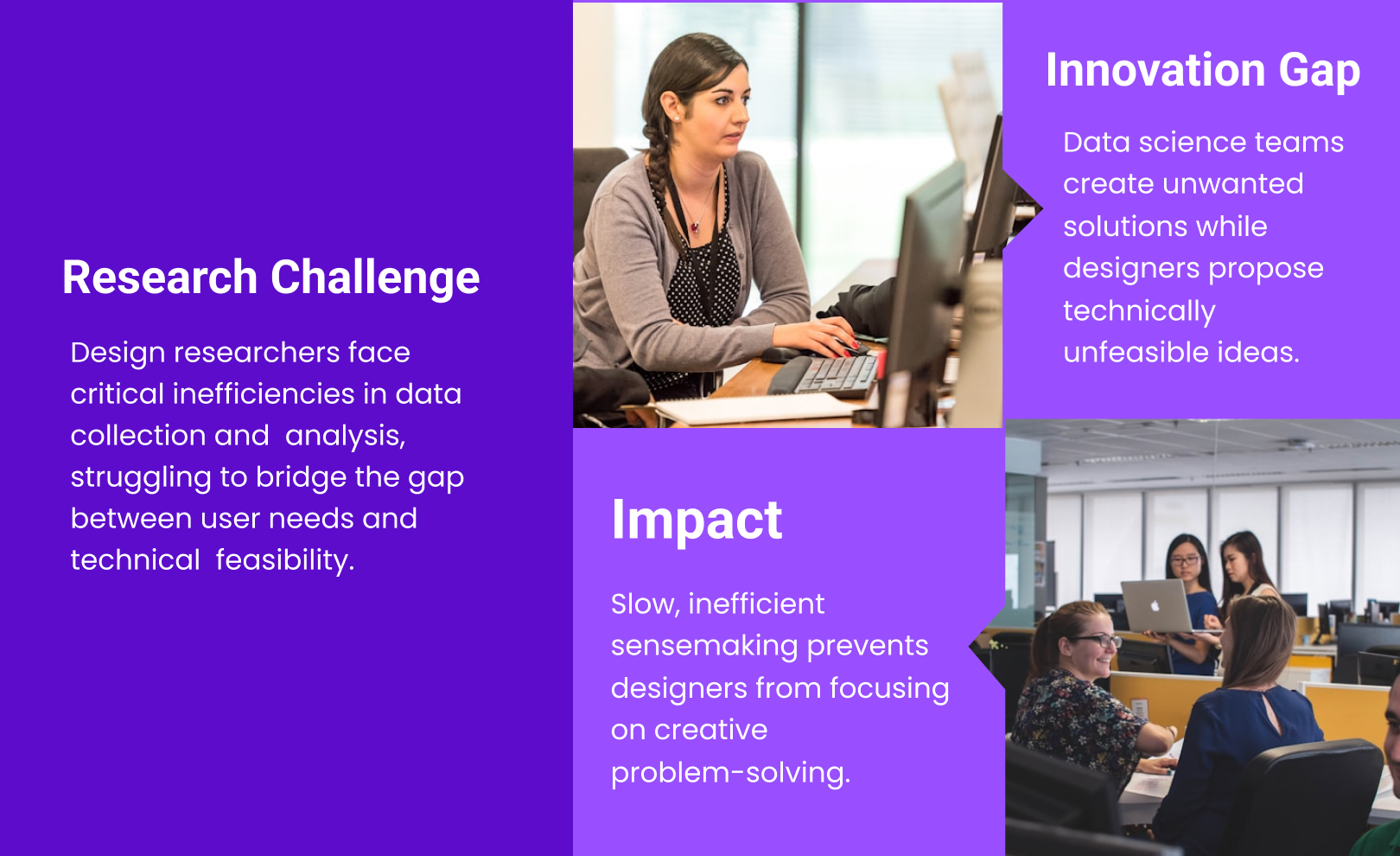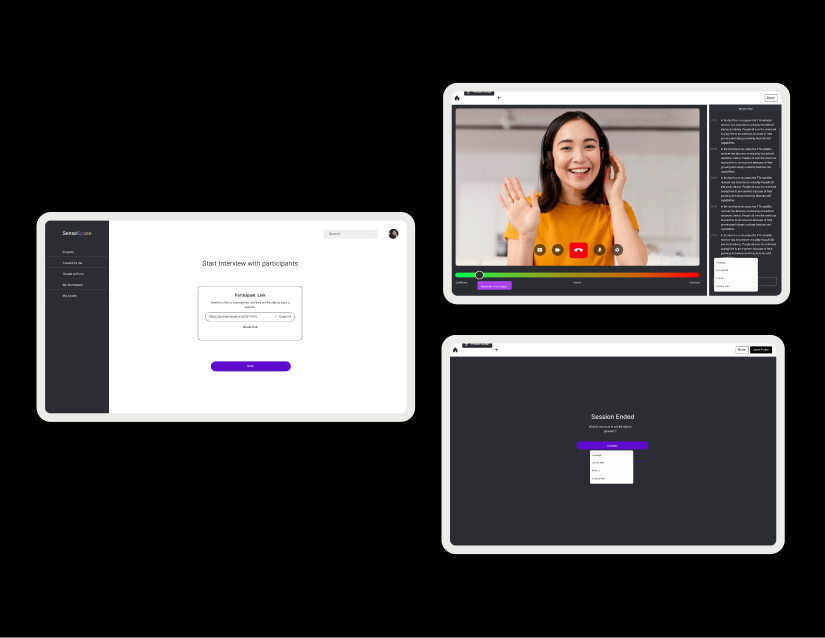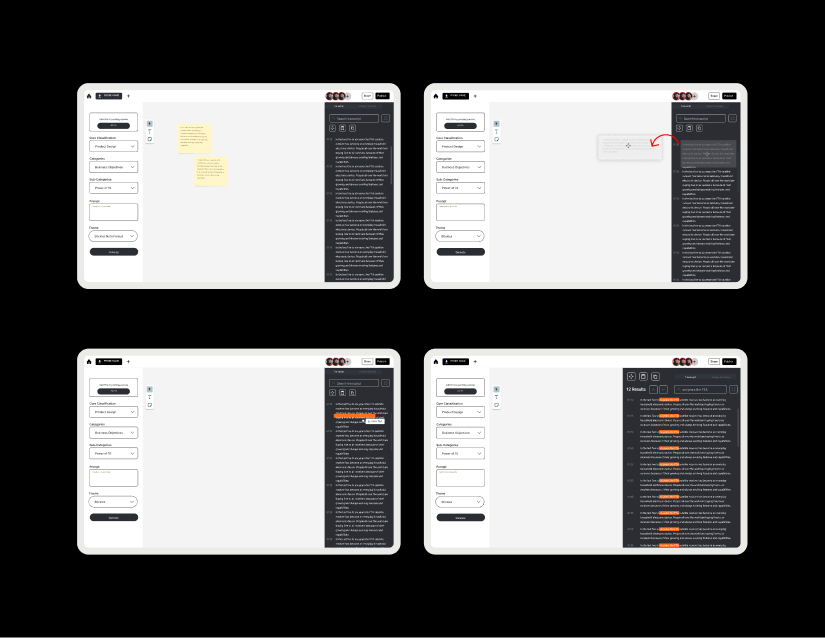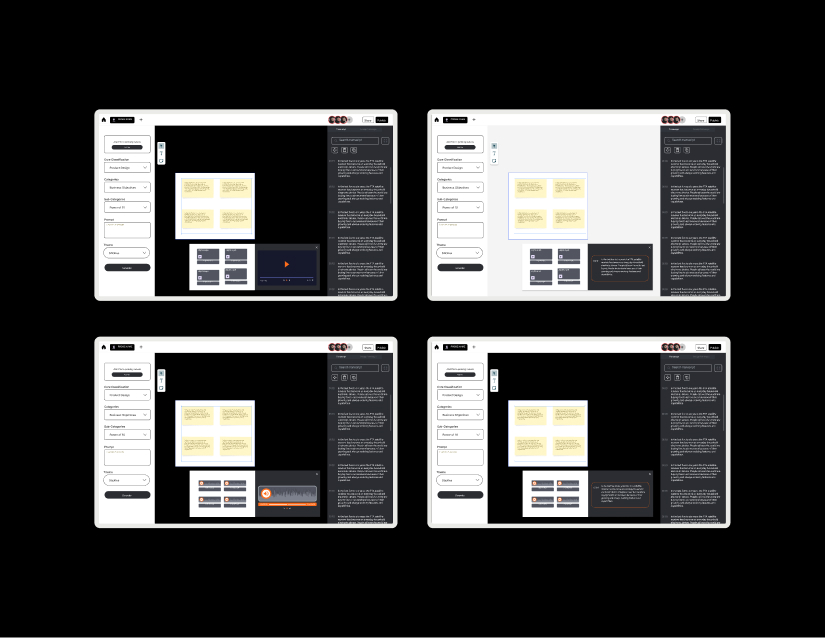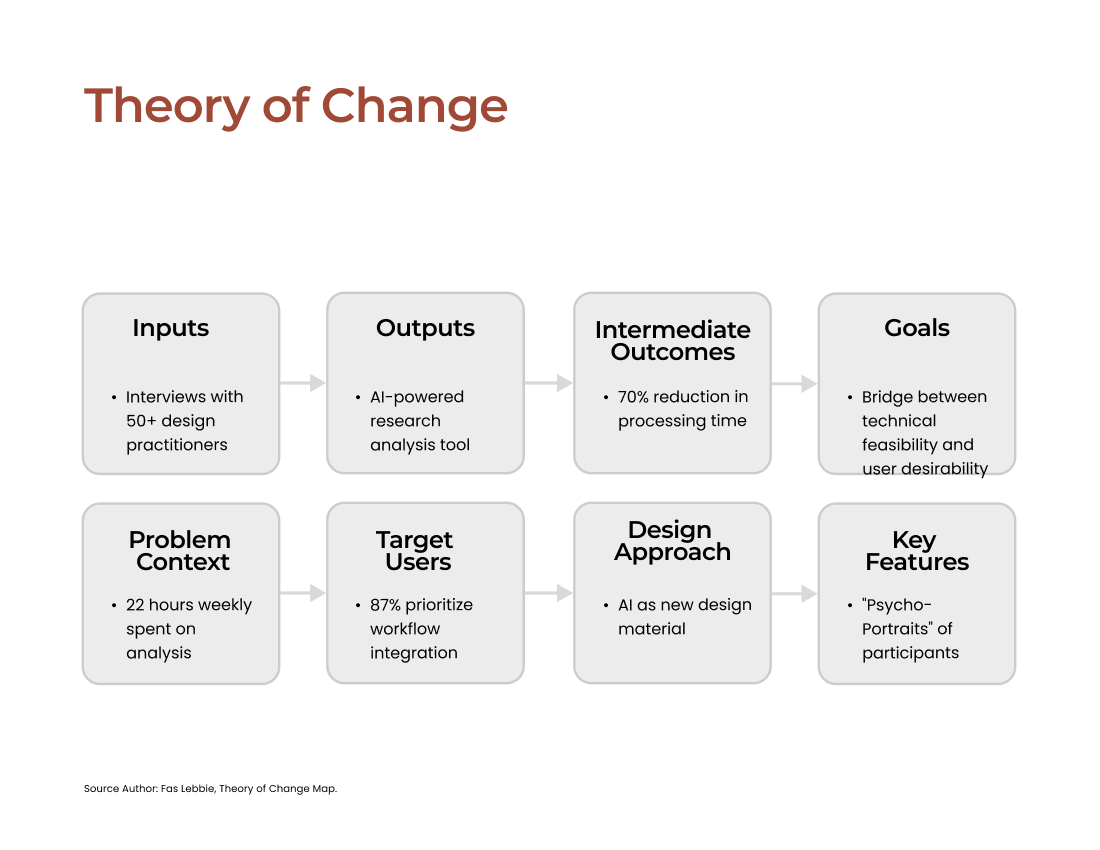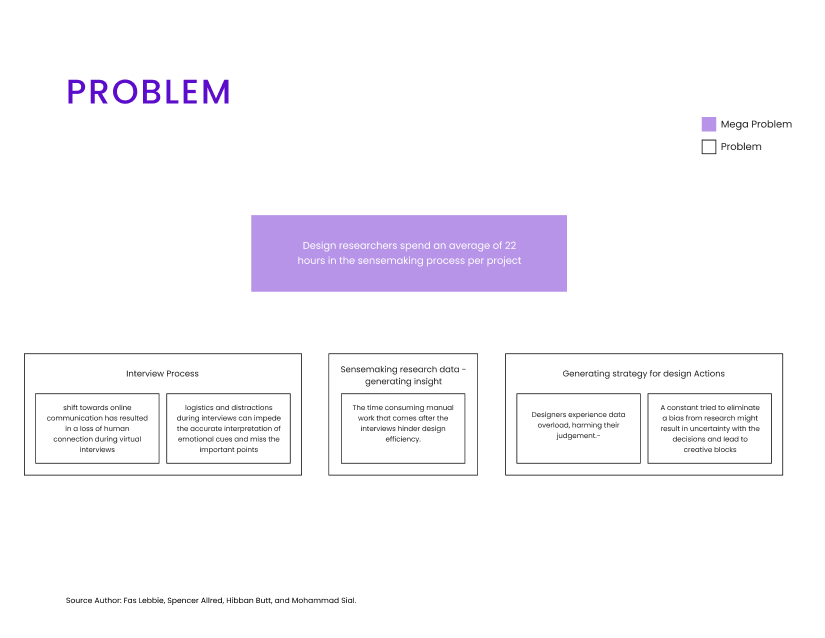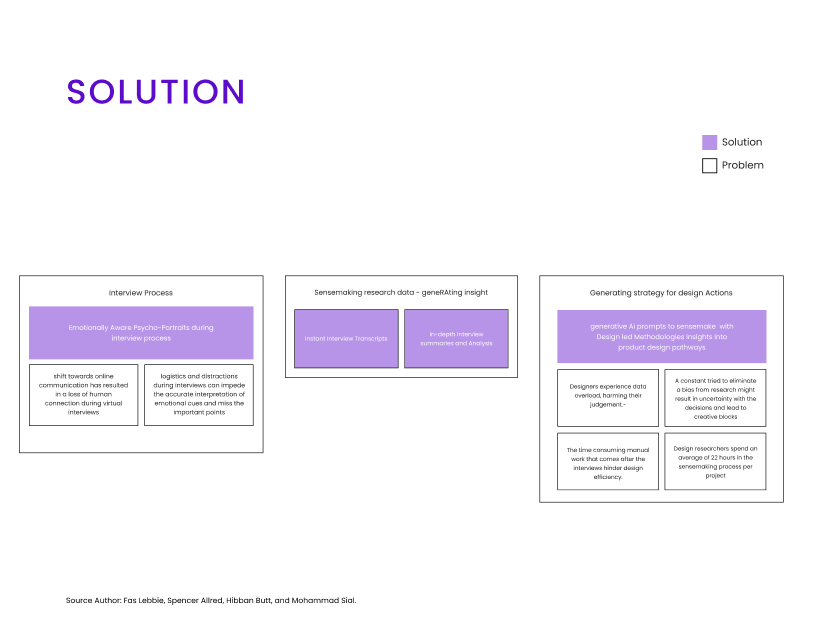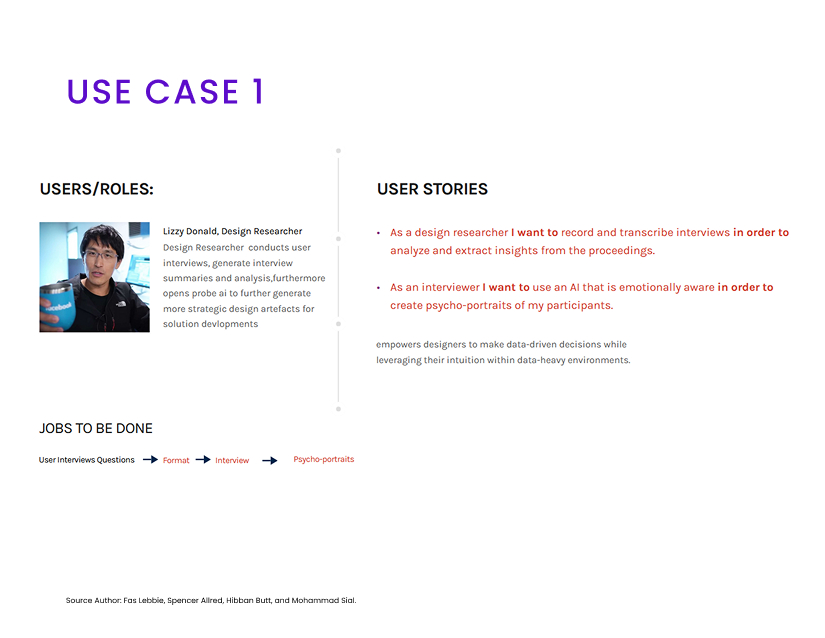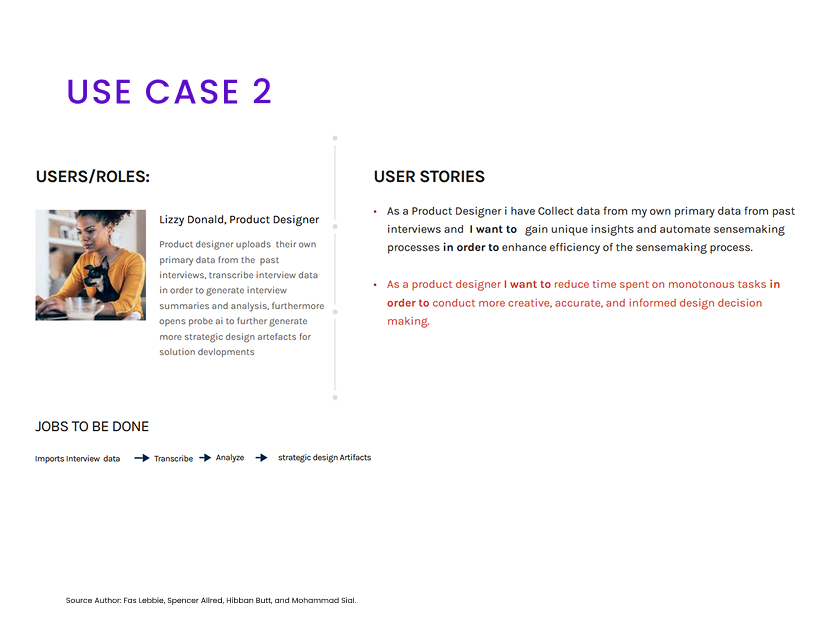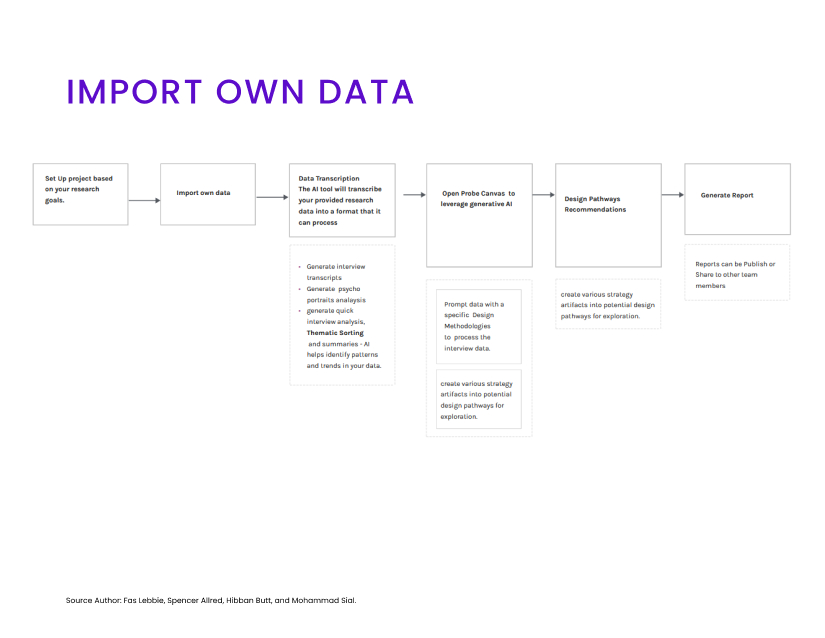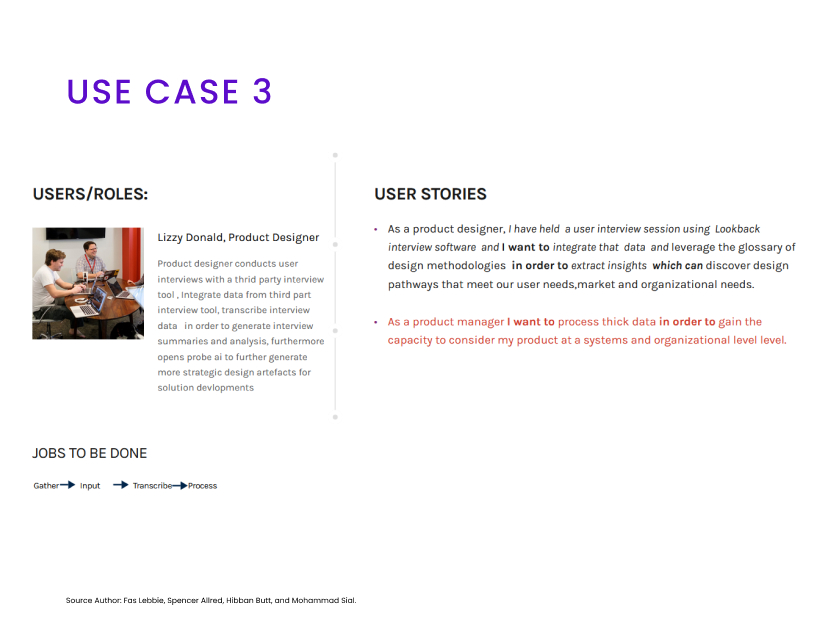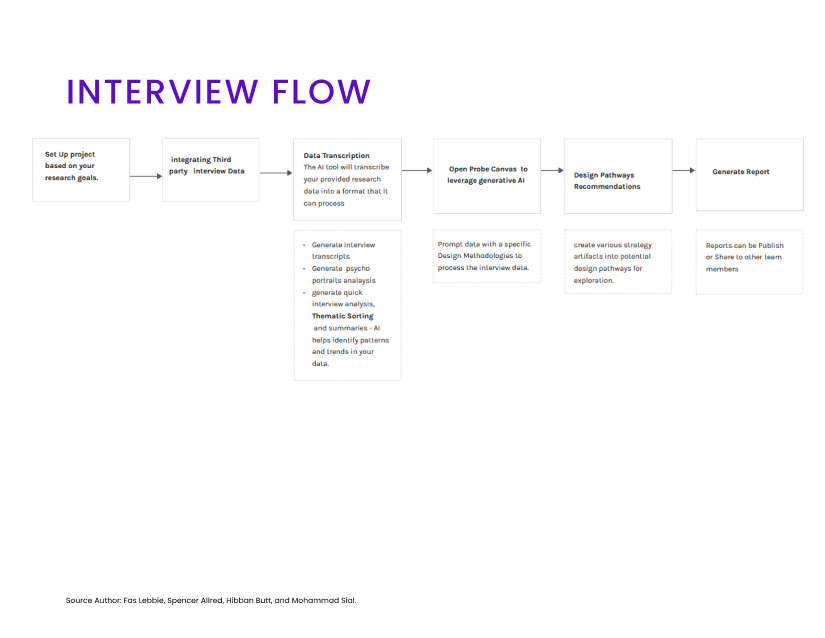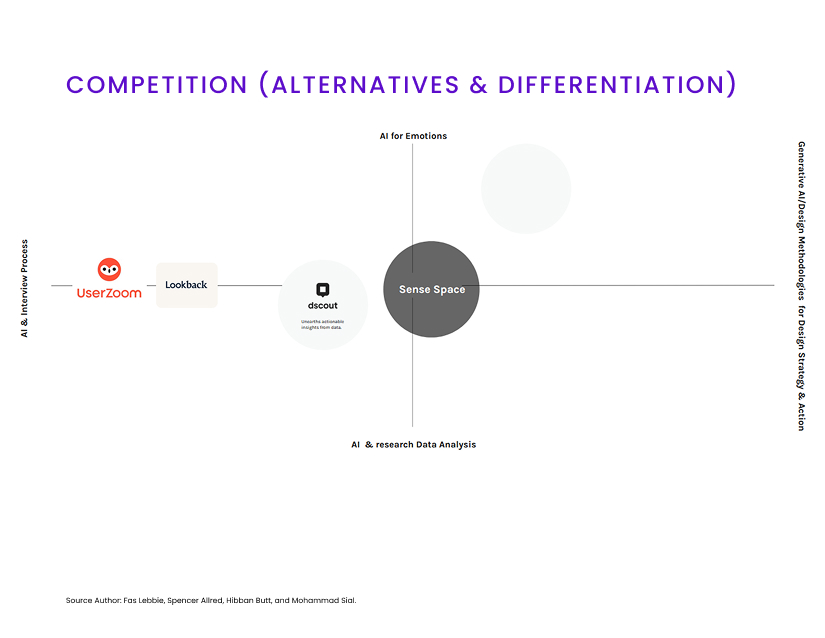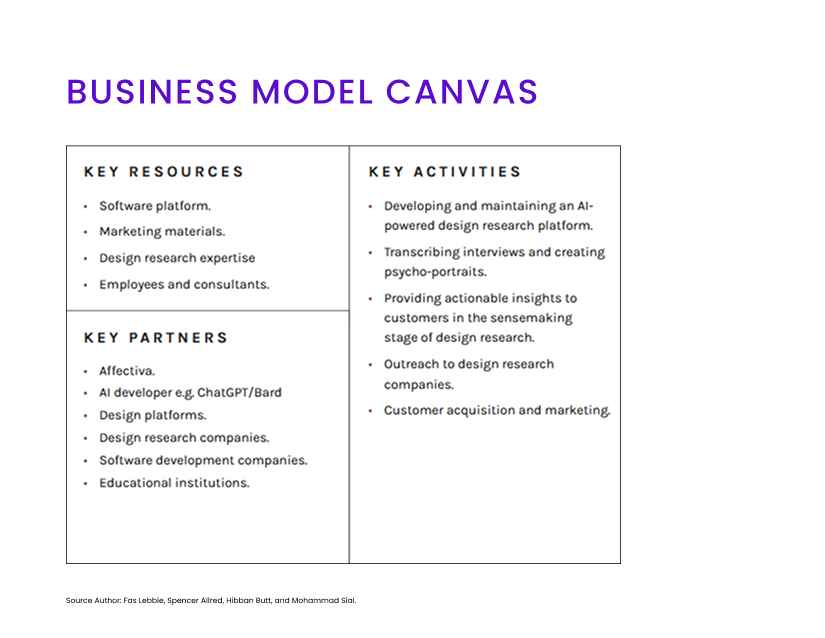Problem Context
Design research currently faces inefficiencies in the sensemaking process. Our research estimates that researchers spend up to 22 hours weekly analyzing interview data, time consumed by wrestling with analysis rather than generating actionable insights. Our discussions with product teams—including researchers, designers, and product managers—uncovered a concerning pattern: engineering teams frequently build technically sound solutions that miss user needs or create products users simply don’t want. Meanwhile, design teams propose ideas that, while appealing to users, prove technically unfeasible to implement. The core issue driving this disconnect is the gap between raw data collection and identifying meaningful patterns that can drive effective design decisions. This challenge creates a fundamental barrier in the product development process, where valuable user feedback exists but fails to translate into successful product outcomes. By addressing these inefficiencies in how teams process and interpret research data, we can bridge the gap between technical possibilities and genuine user needs, ultimately leading to products that are both technically sound and eagerly adopted by users that are done in a timely manner.
